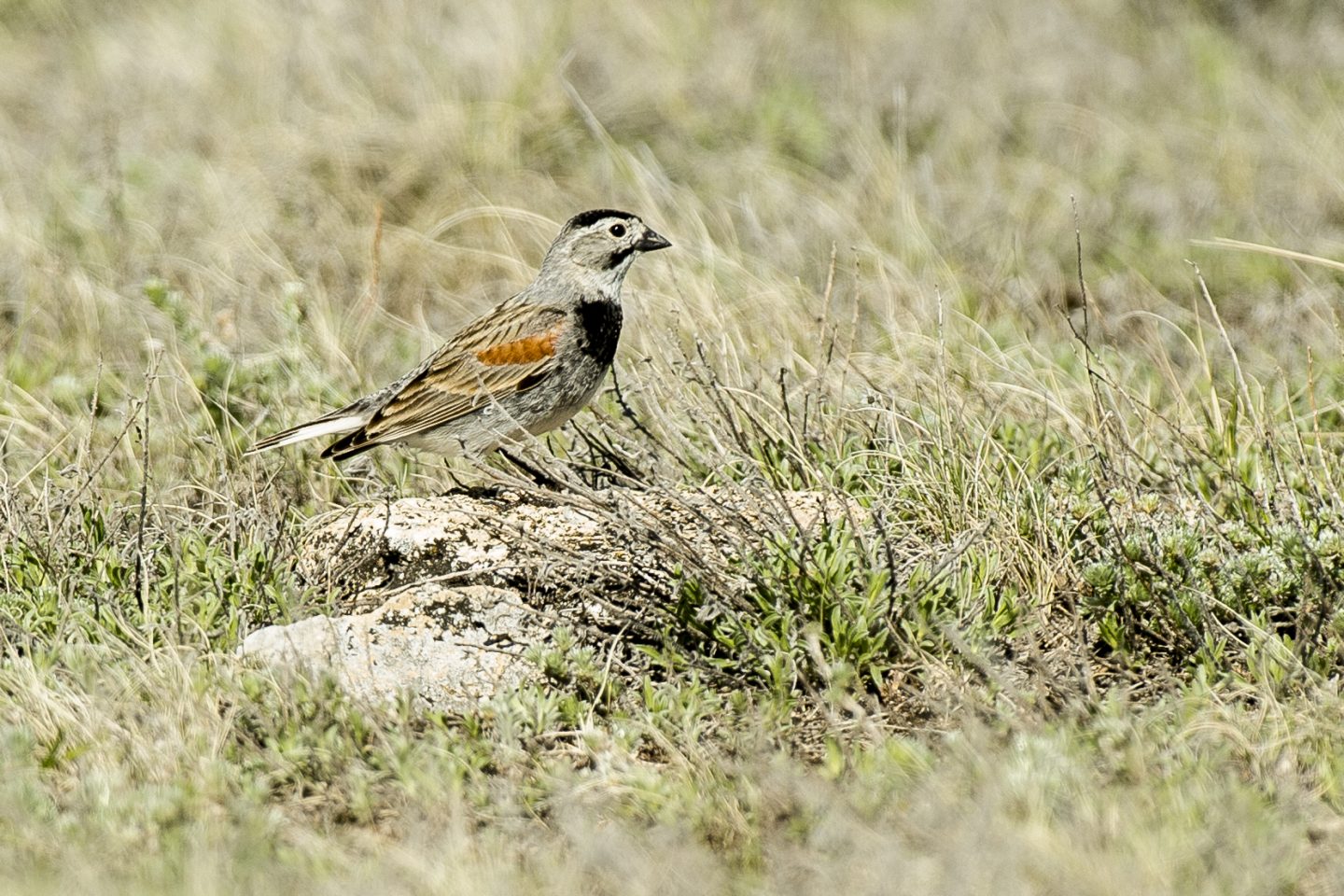
By Ruby Rolland, Environmental Specialist, Nebraska Game and Parks
As the sun rises over the still-frosty prairie, so does the male thick-billed longspur. He’s arrived in western Nebraska this spring in search of breeding territory and a mate to share it with. Good nesting ground has been increasingly difficult for him to find, as the shortgrass prairies that used to sprawl across the Panhandle have been lost to the plow, human development and invasive grasses and trees. Overgrazed pastures will provide a decent place to try and raise a family, but nothing beats a diverse, native prairie. Not wasting any time, he sets out in search of breakfast, a variety of seeds and insects, and a small plot of land for a family summer home.
Finding the perfect spot, the male now focuses on attracting a mate. To entice a female, he flutters into the air, flaring out his wings and tail feathers, and sings a metallic trilling song, over and over and over. His vibrant white, black and copper feathers, strong voice and stamina signify he is genetically healthy and able to defend his female and territory. Lured by his flashy tail feathers and impeccable choice in nesting location, a female arrives. Much less showy than her black-bibbed counterpart, the streaky brown female evaluates the male, his territory, and chooses him as her mate.
Successful in his courtship, the male focuses on defending their home while the female builds their nest. Constructed on the ground, the nest is a small cup made of intertwined grass, delicately lined with collected feathers, hair and softer grasses. Inside are two to six small, speckled eggs that will hatch after 12 days into helpless, naked chicks. Facing imposter cowbirds, insecticides, prowling predators and fierce sibling rivalry, the chicks must survive 10 days until they can fly. Mom and dad spend those days frantically catching and dismembering grasshoppers to feed to their growing brood, whose appetites are insatiable.
Once the chicks can feed and fend for themselves, the family disbands and, as cooler weather creeps in, the thick-billed longspurs flock up and head south to ride out the winter on the southern plains of Texas and Mexico.
Nebraska lists 32 species of plants and animals as threatened or endangered. The thick-billed longspur (Rhynchophanes mccownii) is listed as threatened in the state of Nebraska and is found out west in Banner, Kimball, Scotts Bluff and Sioux counties from April to November.
For more information on Nebraska’s threatened and endangered species, visit OutdoorNebraska.gov.
Nebraska’s List
Threatened Species
- Eastern black rail
- Piping plover
- Rufa red knot
- Thick-billed longspur
- Mountain plover
- Southern flying squirrel
- Lake sturgeon
- Northern redbelly dace
- Finescale dace
- American burying beetle
- Timber rattlesnake
- Western massasauga
- Western prairie fringed orchid
- Ute ladies’-tresses
- American ginseng
- Small white lady’s slipper
Endangered Species
- Eskimo curlew
- Whooping crane
- Interior least tern
- Black-footed ferret
- Swift fox
- Gray wolf
- Northern long-eared bat
- Pallid sturgeon
- Topeka shiner
- Sturgeon chub
- Blacknose shiner
- Salt Creek tiger beetle
- Scaleshell mussel
- Blowout penstemon
- Colorado butterfly plant
- Saltwort
